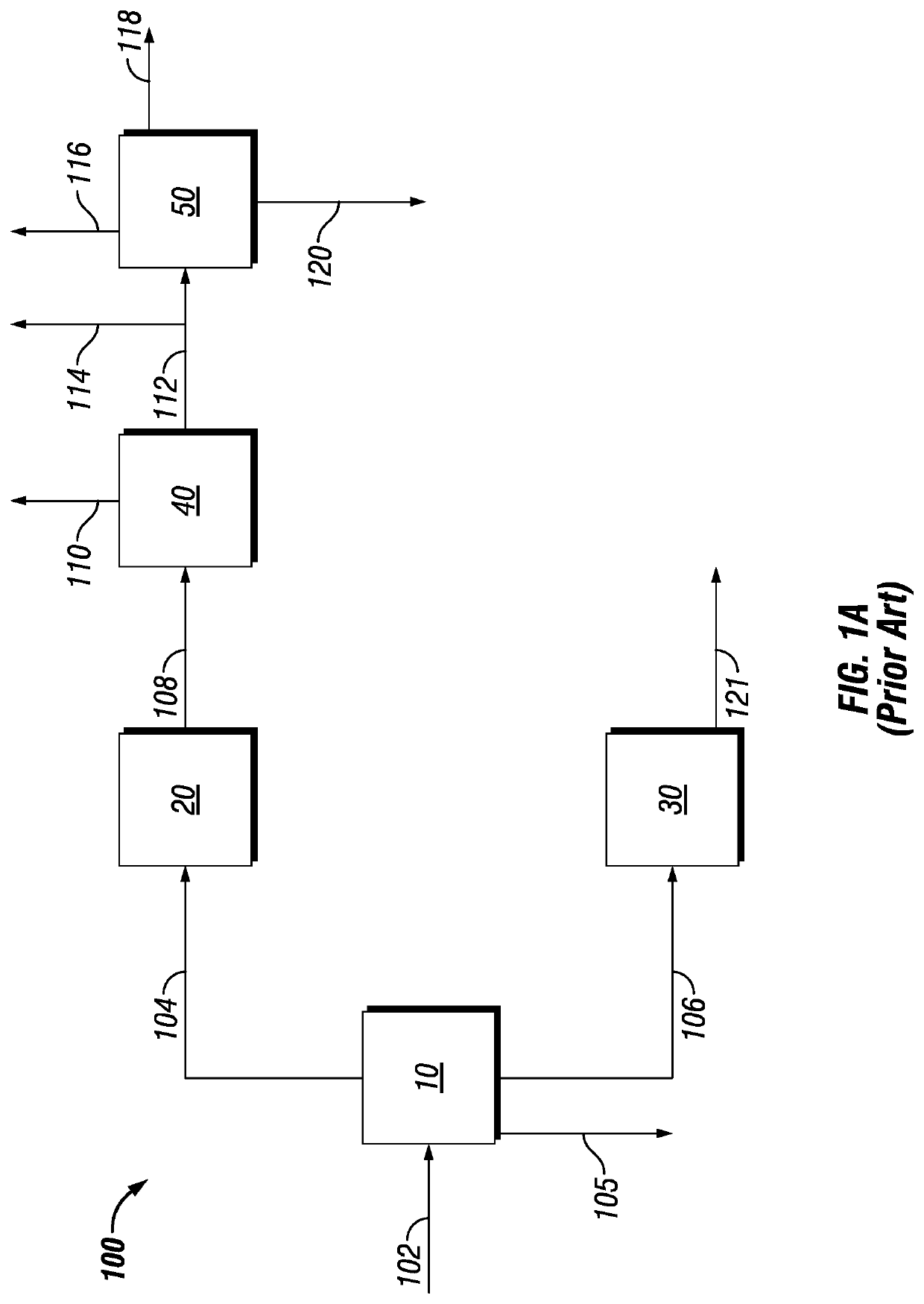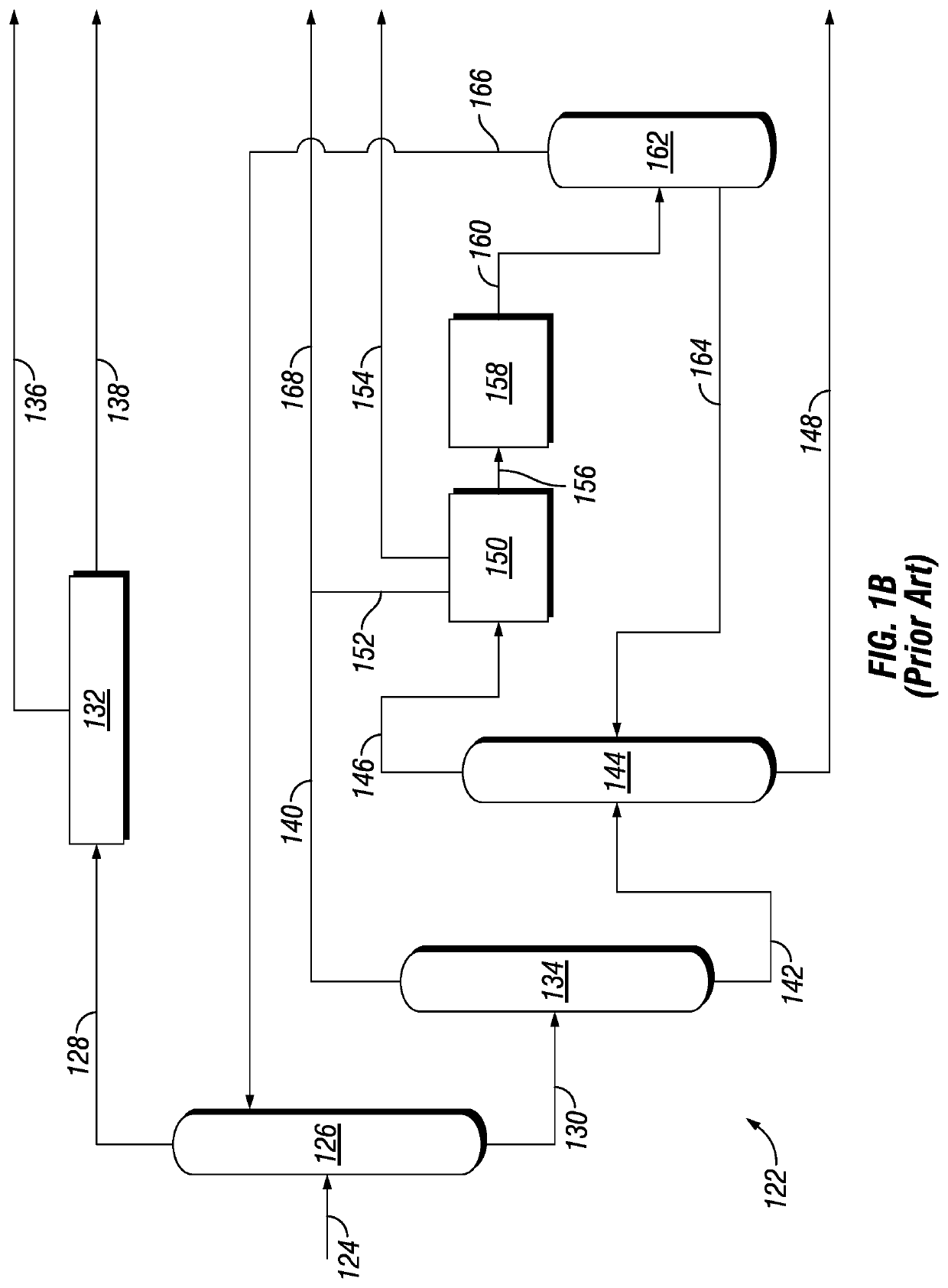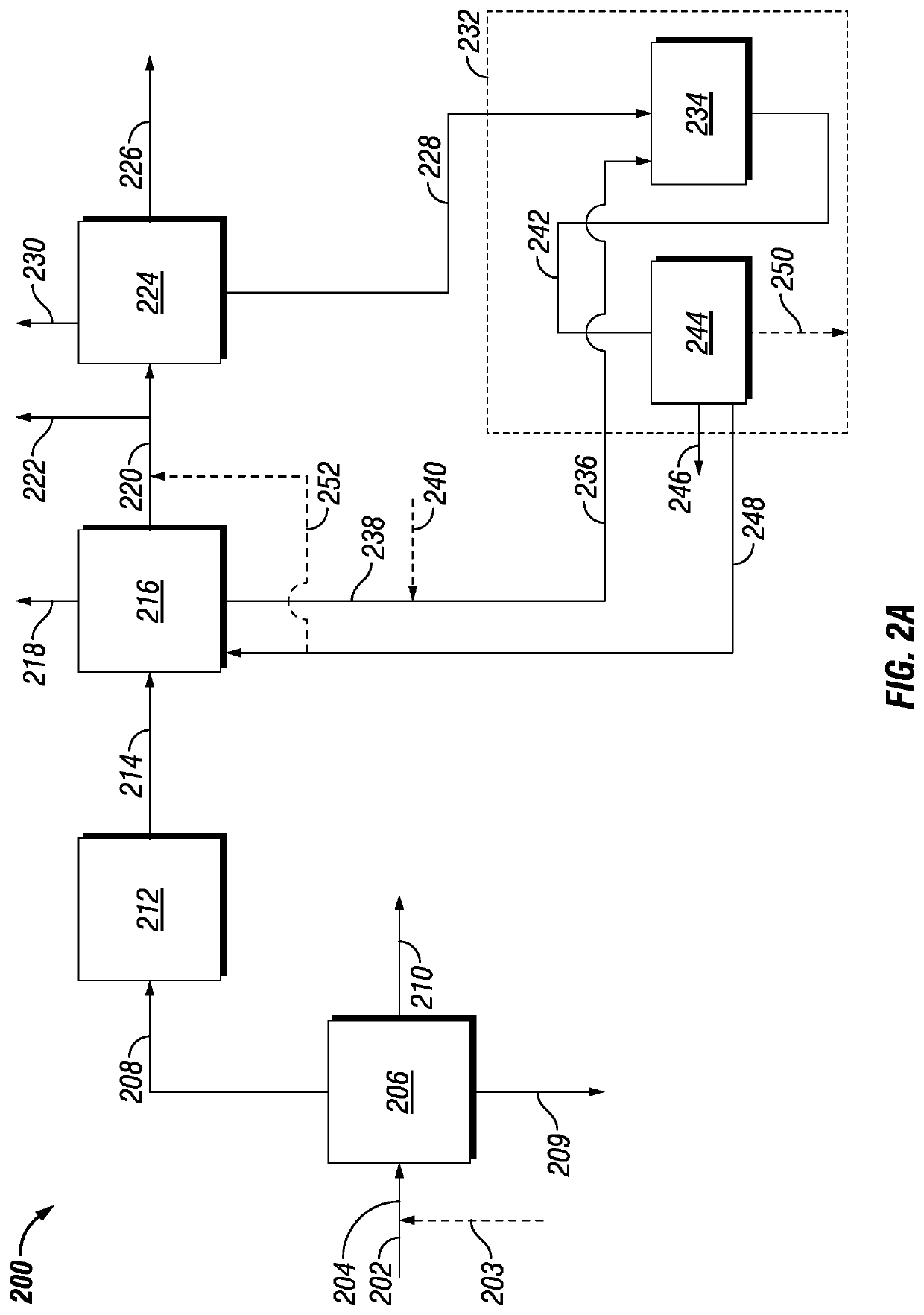Two stage hydrodearylation systems and processes to convert heavy aromatics into gasoline blending components and chemical grade aromatics
- Summary
- Abstract
- Description
- Claims
- Application Information
AI Technical Summary
Benefits of technology
Problems solved by technology
Method used
Image
Examples
examples
[0049]In Example 1, 11.4775 kg of an aromatic bottoms fraction was distilled using a lab scale true boiling point distillation column with 15 or more theoretical plates using ASTM method D2917. 9.411 kg (82 W %) of a gasoline fraction boiling in the range of 36° C. to 180° C. was obtained, and 2.066 Kg (18 W %) of a residue stream boiling above 180° C. was obtained. The gasoline fraction was analyzed for its content and octane numbers.
TABLE 1Properties of aromatic bottoms feed stream of Example 1.FeedstockAromaticTops GasolineBottoms DieselPropertyUnitBottomsIBP 180° C.−180° C.+Densityg / cc0.88380.87620.9181Octane Number—NA110NAASTM D2799Cetane Index—NANA12IBP° C.15367167 5 W %° C.1627317610 W %° C.1637318130 W %° C.1677619250 W %° C.1727719970 W %° C.1767920990 W %° C.1918131795 W %° C.20781333FBP° C.33383422Paraffinswt. %0.00n / an / aMono-aromaticswt. %94.1n / an / aNaphthenowt. %0.9n / an / aMono-aromaticsDi-aromaticswt. %3.7n / an / aNaphthenowt. %0.9n / an / adi-aromaticsTri+ Aromaticswt. %0.3n / an...
PUM
 Login to View More
Login to View More Abstract
Description
Claims
Application Information
 Login to View More
Login to View More - R&D
- Intellectual Property
- Life Sciences
- Materials
- Tech Scout
- Unparalleled Data Quality
- Higher Quality Content
- 60% Fewer Hallucinations
Browse by: Latest US Patents, China's latest patents, Technical Efficacy Thesaurus, Application Domain, Technology Topic, Popular Technical Reports.
© 2025 PatSnap. All rights reserved.Legal|Privacy policy|Modern Slavery Act Transparency Statement|Sitemap|About US| Contact US: help@patsnap.com



